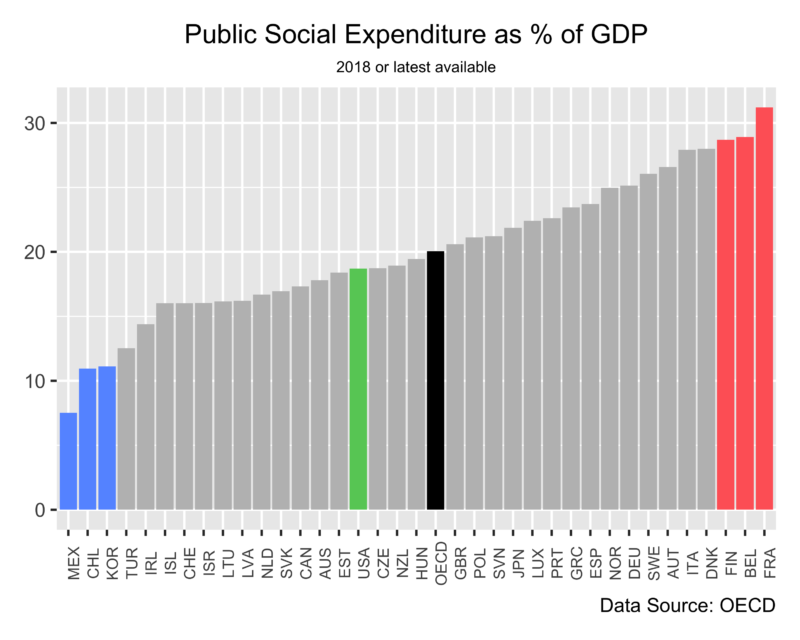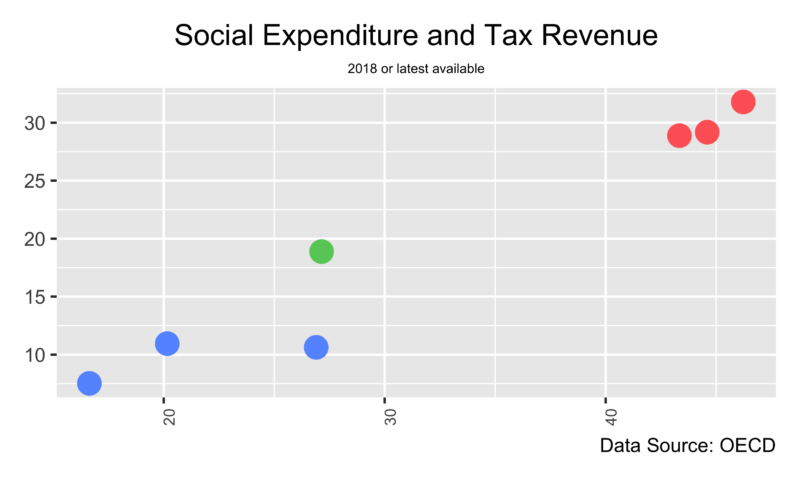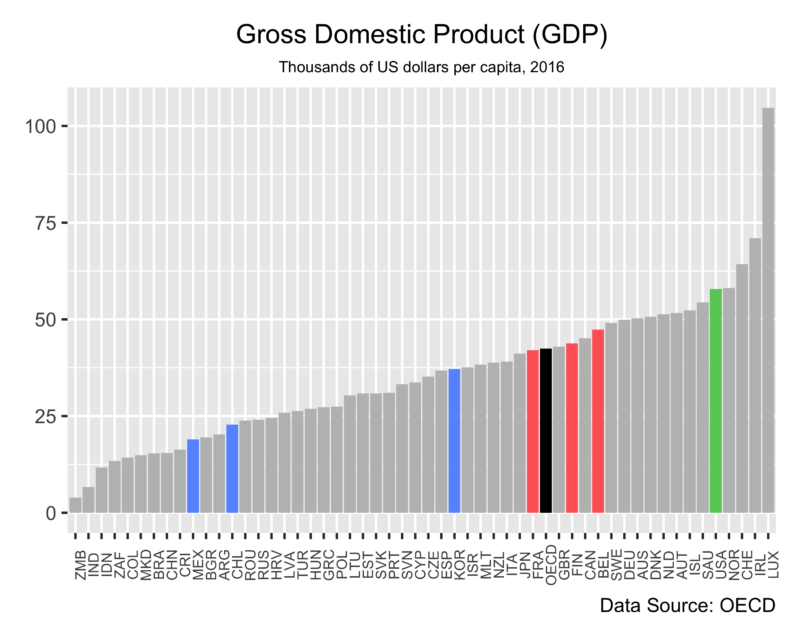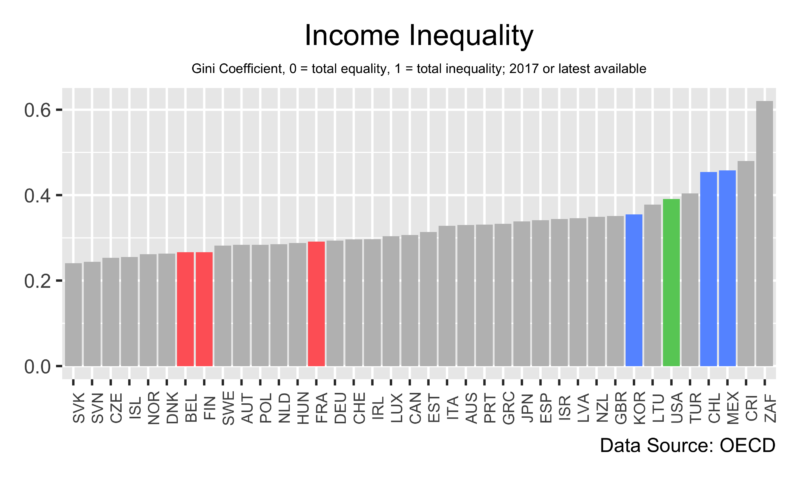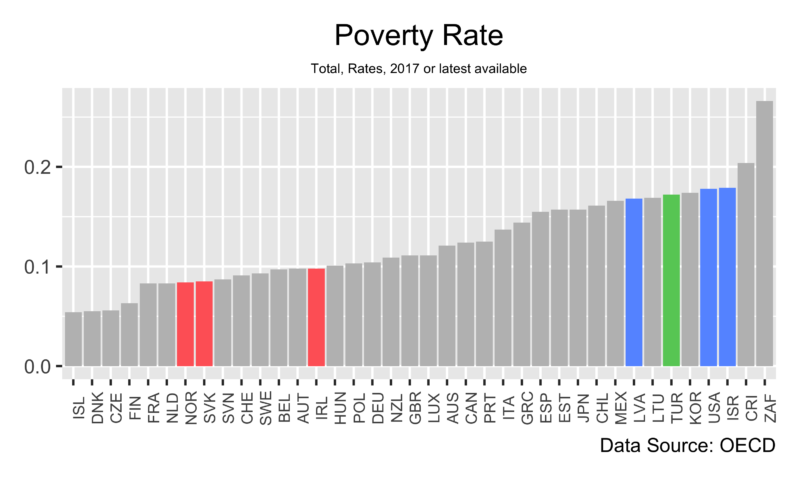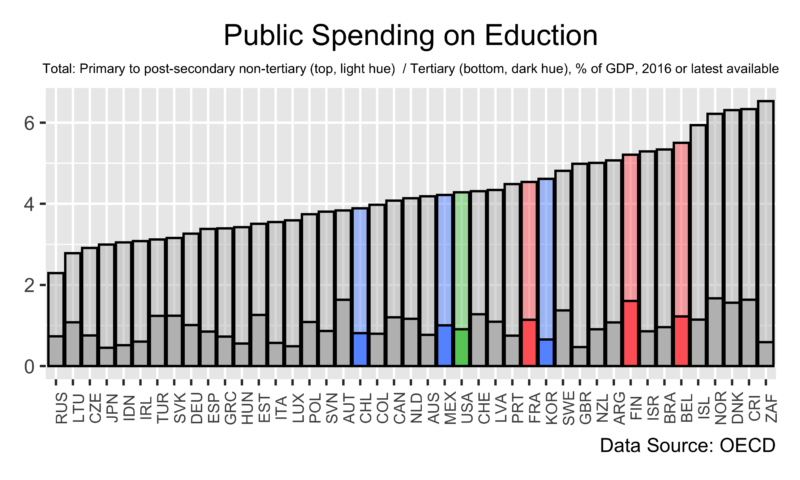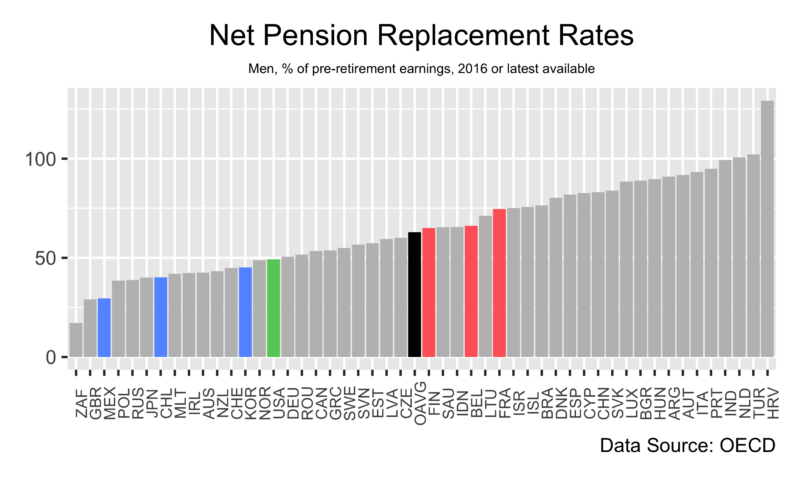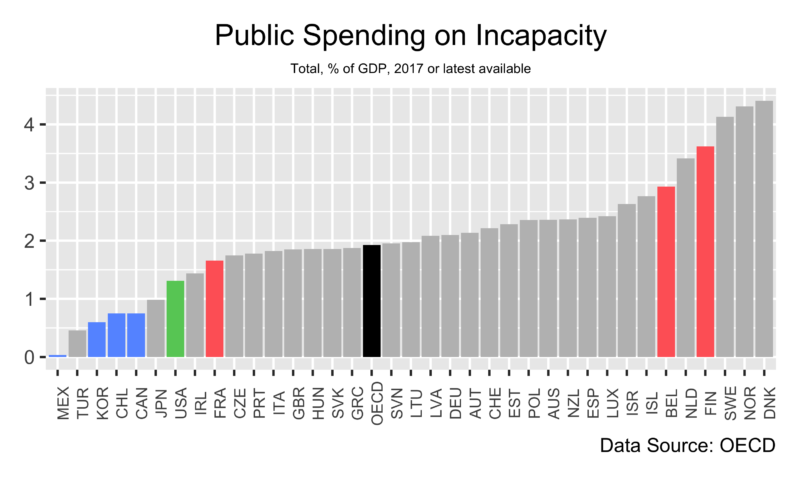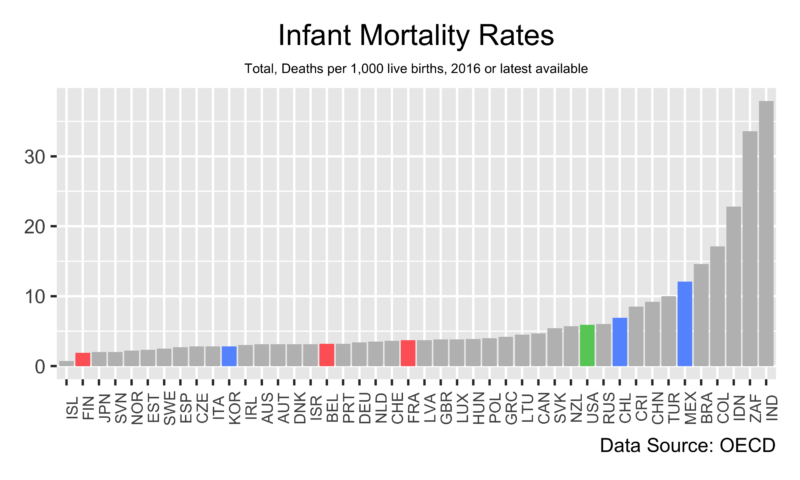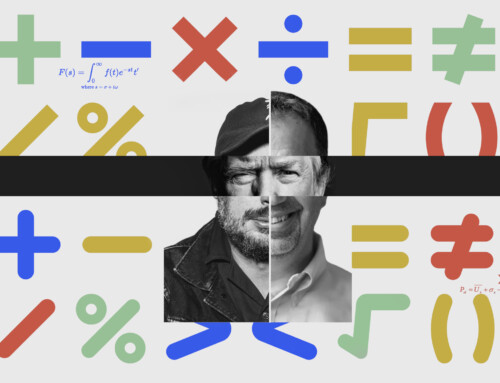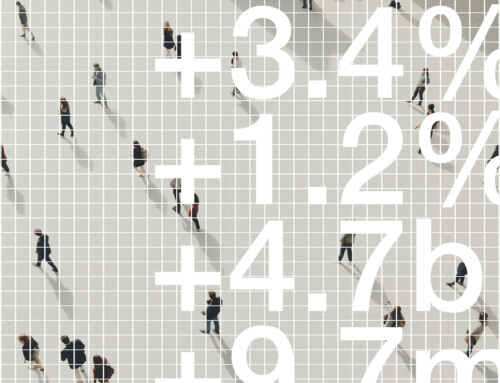Twisha Asher
June 30, 2019
In 2017, Alexandria Ocasio-Cortez beat Joe Crowley to claim the seat for New York’s 14th district in a momentous political upset. As a self-described Democratic Socialist, Ocasio-Cortez’s election spurred debate across the political spectrum. Her election was hailed simultaneously as a statement of an energized youth, as well as an uprising of a movement to dismantle capitalism. In 2016, Bernie Sanders ran a relatively popular campaign while also self-identifying as a democratic socialist. Meanwhile, Elizabeth Warren has rejected the label and identified as a capitalist. However, with all the excitement (positive and negative) surrounding the term, there is significant confusion about what this means as an ideology and how it plays out in practice. In this article, I clarify the term democratic socialism and then compare various economic and social indicators between the United States and countries with stronger and weaker elements of democratic socialism.
Democratic Socialism
While socialism has various connotations and meanings in the contexts of politics, history, and economics, the term carries a sort of stigma in the United States. Perhaps a relic of the Second World War and the Cold War, socialism (democratic or not) and communism are sometimes used interchangeably. Historical hostilities between the United States and various communist countries, therefore, might explain some of the negativity surrounding the term. Democratic socialists in the United States, however, reject this equivalence. According to the website for the Democratic Socialists of America (or the DSA, of which Ocasio-Cortez is a member), “Democratic socialists believe that both the economy and society should be run democratically—to meet public needs, not to make profits for a few.” The webpage states explicitly that they do not want complete government control, nor do they want complete ownership by large corporations.
So, what exactly does democratic socialism look like and are there any countries that exemplify this ideal? The DSA website cites Northern European countries as examples of states that have embraced various aspects of democratic socialism and have been prosperous. They further note that, “We can learn from the comprehensive welfare state maintained by the Swedes from Canada’s national health care system, France’s nationwide childcare program, and Nicaragua’s literacy programs.”
Pointing to an exact system of what it means to be democratic socialist is challenging because it does not fall at or near either extreme of free-market capitalism, or complete-government-control communism. However, with these examples in mind, it is clear that democratic socialism, according to this perception, contains elements of social safety nets. What all these programs have in common is that they are set up by the government for the benefit of citizens, especially vulnerable populations like children, the ill, people living in poverty, and so on. There is social expenditure from the government directed at all or part of the population.
The idea of government social spending enables a more robust analysis. One can measure the degree of democratic socialism through gradations of social expenditure. For the purpose of this analysis, since the question is being asked through the lens of the United States, the focus here will be on the relatively high-income countries in the Organization of Economic Co-operation and Development (OECD) whose 36 members include many of the richest countries in the world, as well as a number of emerging economies.
Public spending as a percent of GDP for the OECD countries shows that Mexico, Chile, and South Korea are on the lower end of the spectrum while Belgium, France, and Finland are on the higher end. The United States’ share puts it slightly below the OECD average.
Because of the wide variety of categories included in this aggregate measure, I detail some common areas of expenditure and select outcomes associated with countries that have higher levels of public expenditure. To illustrate aspects of democratic socialism as generally understood, I focus on common, accessible and comparable measures of wellbeing as defined by the OECD.
Taxation
Restricting our view to the countries with the highest social spending as a percent of GDP, the table below suggests that they also have the highest tax revenue as a percent of GDP, in the mid-to-high 40% range.
Tax Revenue: Total, % of GDP, 2012-2017
| Country | 2012 | 2013 | 2014 | 2015 | 2016 | 2017 |
| Belgium | 44.17 | 45.11 | 45.07 | 44.81 | 44.08 | 44.60 |
| Chile | 33.19 | 19.86 | 19.61 | 20.38 | 20.16 | 20.16 |
| Finland | 42.68 | 43.62 | 43.81 | 43.93 | 44.02 | 43.34 |
| France | 44.36 | 45.37 | 45.45 | 45.28 | 45.46 | 46.23 |
| Korea | 24.78 | 24.30 | 24.59 | 25.16 | 26.24 | 26.90 |
| Mexico | 12.65 | 13.30 | 13.70 | 15.93 | 16.63 | 16.17 |
| United States | 24.07 | 25.65 | 25.98 | 26.23 | 25.89 | 27.14 |
Source: OECD
Countries with the lowest social spending as a percent of GDP have low tax revenue as a percent of GDP. The U.S. falls somewhere in the middle, but closer to the lower end of the distribution.
Per Capita GDP, Income Inequality and Poverty
The GDP per capita is higher for the U.S. at $57,797 as compared to France ($42,030), Finland ($43,730), and Belgium ($47,373).
However, the U.S. has a significantly higher level of income inequality as compared to many advanced and even emerging economies, including Belgium, France, Finland, and Korea (as measured by the Gini coefficient where 0 is perfect equality and 1 is perfect inequality).
The poverty rate (the ratio of people whose income falls below the poverty line) for the United States is substantially higher (.178) as compared to Belgium (.097), France (.083), or Finland (.058). In fact, the U.S. falls towards the higher end of this spectrum in the company of predominantly emerging economies.
Moreover, the ratio by which the mean income of the poor falls short of the poverty line (that is, the how different the mean income of those below the poverty line is as compared to the median income) in the U.S. is also higher at .398 as compared to Belgium (.216), Finland (.225), and France (.239).
Public Spending and Social Safety Nets
Education: In terms of public spending on primary to post-secondary non-tertiary education as a percentage of GDP, the United States lags behind France, Korea, Finland, and Belgium; moreover, the U.S. also spends less on tertiary education as a percentage of GDP as compared to Mexico, Belgium, France, and Finland.
Given that this information may be tempered by how high education costs per student are for various amenities, it is worth noting that in 2015, the U.S. had lower math performance scores as compared to France, Belgium, Finland, and Korea (the closest comparison being France at 493 as compared to the U.S.’s 470. The highest mean score was Singapore’s at 564). Similarly, the U.S. had lower mean reading performance scores than those for Finland, Korea, France, and Belgium. Furthermore, it lagged Finland, Korea, and Belgium in science performance scores, although its mean was one point higher than the mean score for France.
Retirement: Net pension replacement rates, which measure the extent to which pension systems replace income post-retirement (taking income taxes and social security contributions into account), vary across countries. The U.S. falls towards the lower end of this spectrum, with pensions replacing only 49% of pre-retirement income, while France, Belgium and Finland fall in the middle of this distribution, replacing 75%, 66%, and 65% of pre-retirement incomes in post-retirement pensions, respectively.
Disability: The measure of public spending on incapacity as a percentage of GDP is lower in the U.S. as compared France, Belgium, and Finland (0.4% lower than France, the second lowest, and half that of Finland, the highest among the countries in question).
Infant Mortality: Of the countries considered, the U.S. has the highest infant mortality rates after Mexico and Chile; By contrast, France, Belgium, Korea, and Finland have lower deaths per 1000 live births respectively.
It is also worth noting that the U.S. has a lower measles vaccination rate as compared to Korea, Mexico, Belgium, Finland, and Chile, although it is higher than France. Moreover, the diphtheria, tetanus, and pertussis vaccination rates for the U.S. are also lower than those for Korea, Belgium, Mexico, and France, but still higher than those for Chile and Finland.
Conclusion
In summary, democratic socialism is a political and economic system that favors large welfare state spending and the equitable redistribution of wealth. In this article, the data employed from OECD confirms that democratic socialist governments generate higher tax revenues as a share of GDP and spend more in social programs, than the average OECD country. Furthermore, democratic socialism promotes less inequality, less poverty, better health and education outcomes compared to countries with lower social expenditures.


